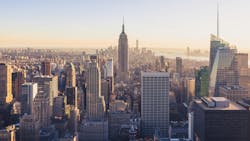Suburbs Dominate Metro Area Population Growth
New data shows that suburbs and exburbs of major U.S. metropolitan areas saw a greater population growth than urban cores.
NewGeography reports that the most recent American Community Survey, which analyzed cities between 2013 and 2017, shows that 89.8 percent of major metropolitan area growth since the 2010 census has occurred in the suburbs and exurbs, outside of the city core. This is a continuation of a pattern seen in previous analysis. New York was the only city to defy this trend, with nearly three quarters of its growth happening in the urban core.
Only 10.2 percent of the major metropolitan growth was in the urban core, which includes the City Sector Model CBD (central business district) and its adjacent Inner Ring. Between 2010 and 2013-2017, the suburbs and exurbs added population at a 1.05 percent annual rate, 50 percent greater than the 0.70 annual rate in the urban core.
The estimates indicate that the largest population growth has occurred in the Later Suburbs (generally outer suburbs), which added 4.25 million residents from the 2010 census to 2013-2017. The Earlier Suburbs (generally inner suburbs) added 2.5 million residents and the exurbs added 1.5 million. Smaller gains occurred in the Urban Core: Inner Ring, at 0.81 million and the Urban Core: CBD, at 0.11 million.
